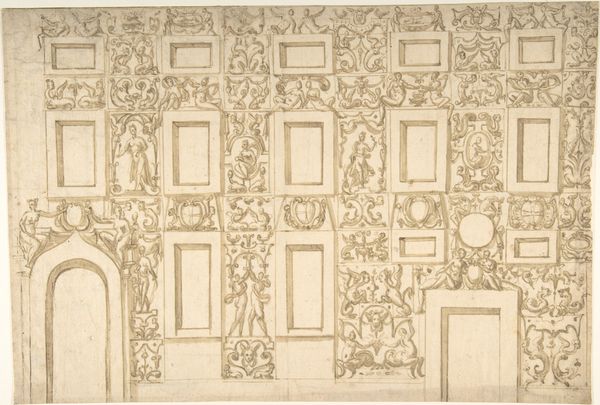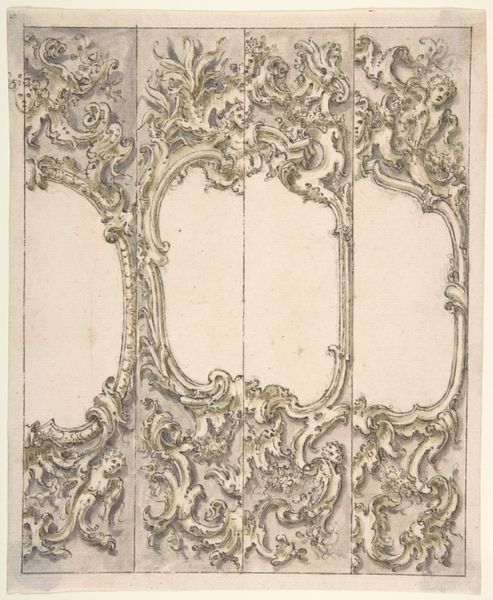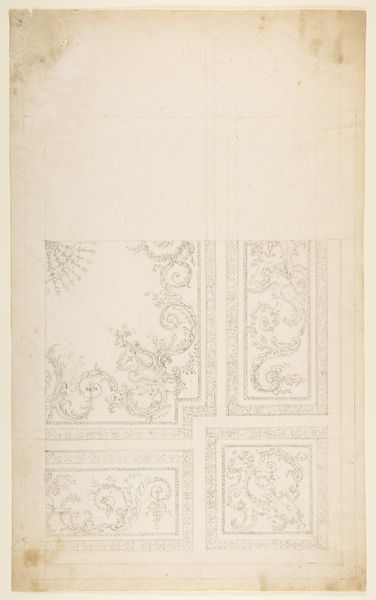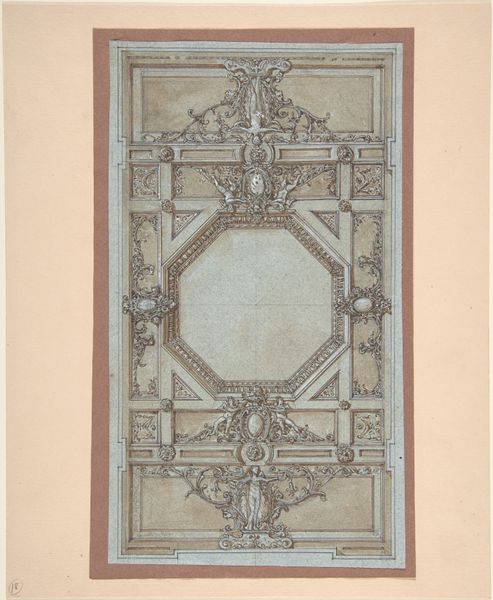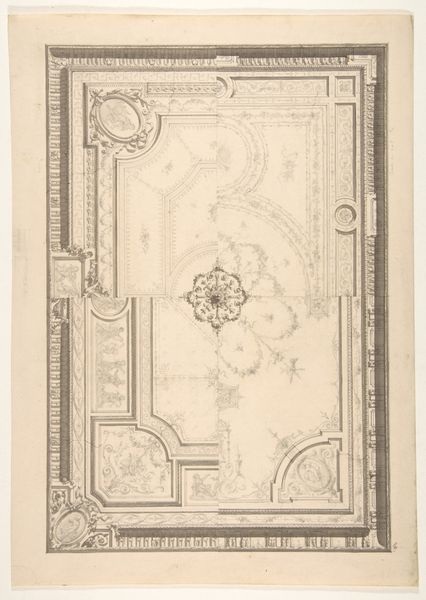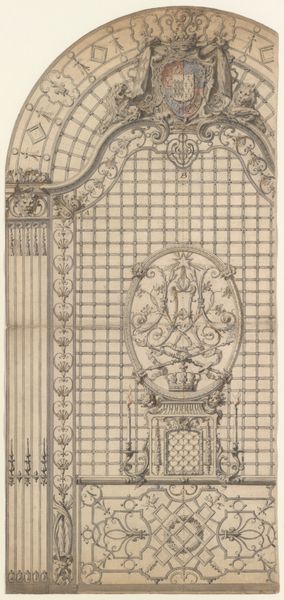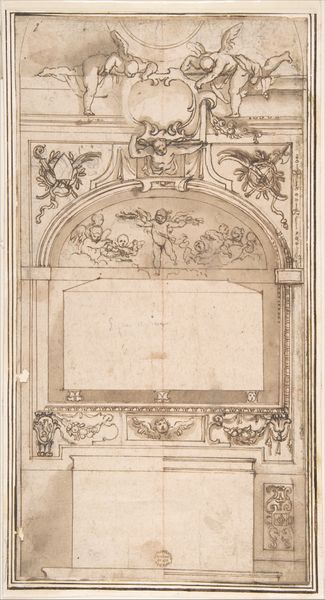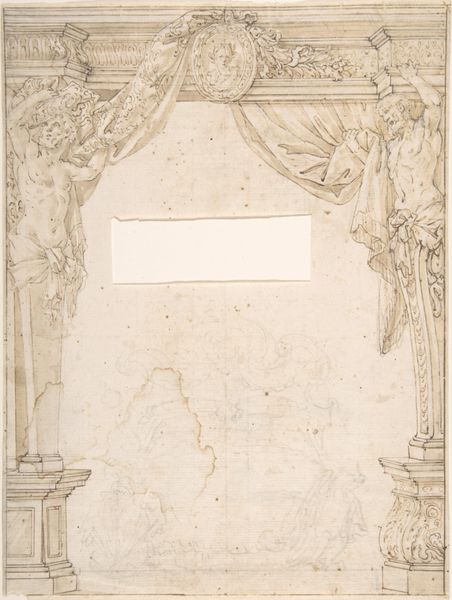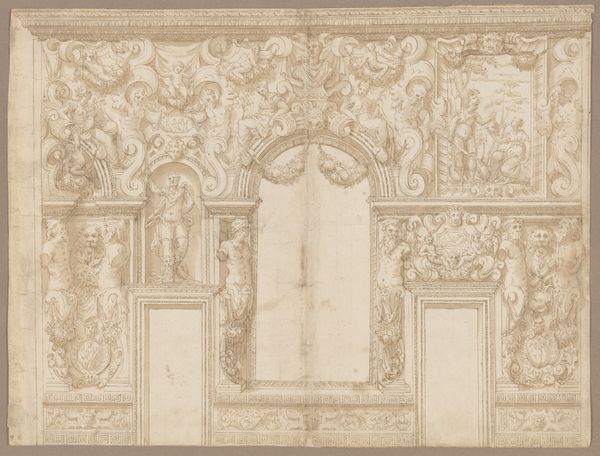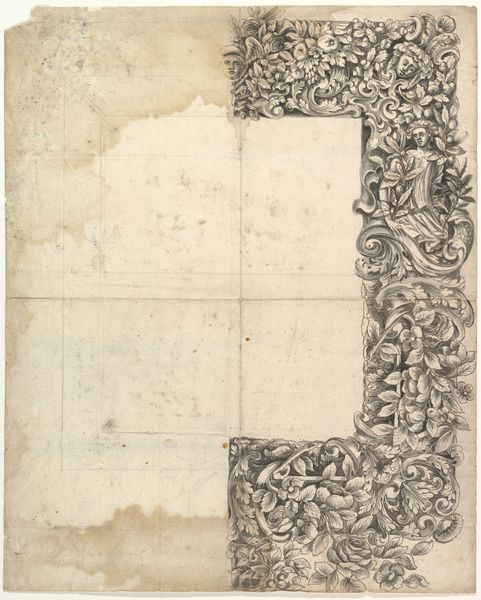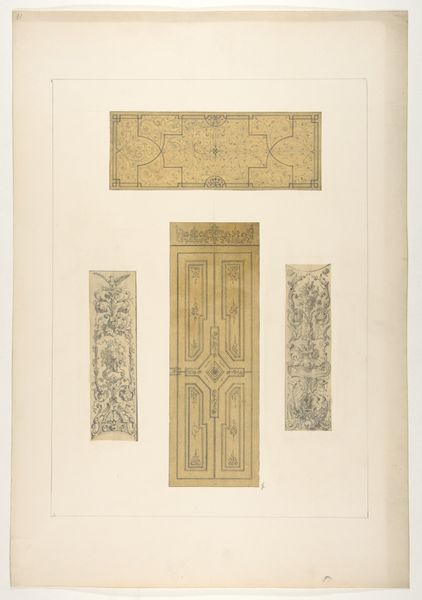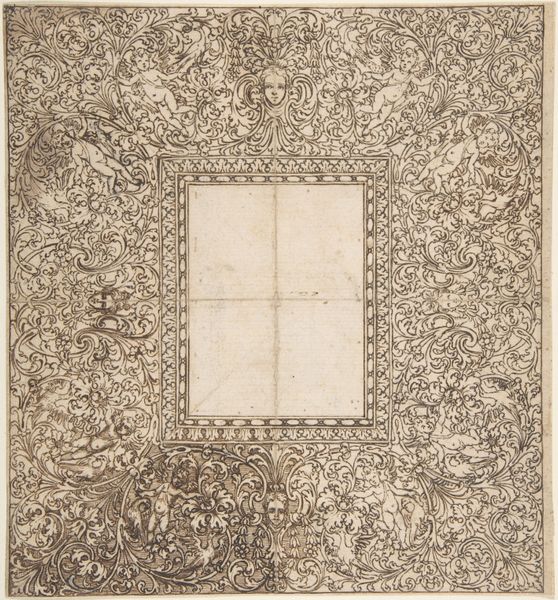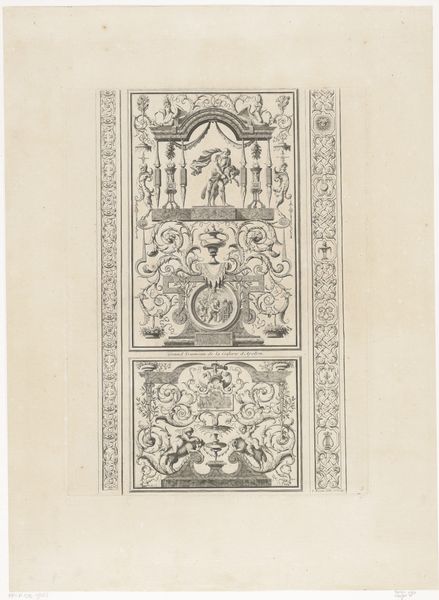
Design for a Facade with Sgraffito Decorations 16th century
0:00
0:00
drawing, etching, architecture
#
drawing
#
etching
#
etching
#
form
#
11_renaissance
#
geometric
#
line
#
history-painting
#
architecture
Dimensions: sheet: 12 1/8 x 7 3/16 in. (30.8 x 18.3 cm)
Copyright: Public Domain
Curator: This drawing, rendered in etching, offers us a glimpse into the architectural ambitions of the 16th century. Titled "Design for a Facade with Sgraffito Decorations," it's a tantalizing plan for a building facade, originating from an anonymous hand. Editor: Intricate. Almost overwhelming at first glance. It reminds me of densely patterned fabric, perhaps tapestry-like, but with a stern geometric undercurrent holding it together. A captivating, yet rigid ornamental dance, wouldn't you agree? Curator: Indeed. Sgraffito, if you're unfamiliar, is a decorative technique where layers of plaster are scratched away to reveal contrasting colors underneath, and the intricate patterns we see here are clearly designed for such execution. The anonymous architect shows panels of swirling vegetal motifs alongside more controlled geometric shapes—alternating exuberance with restraint. Editor: I love how you describe it as exuberance alongside restraint. Viewing it through the lens of architectural theory, one can see how the facade acts as a sort of social canvas, communicating the power and wealth of the building's patron through this elaborate design. How interesting that this concept feels radically contradictory from our post-modern context in 2024. Curator: I also note how light seems to sculpt the surface. Consider the shadows and highlights this sgraffito design would create in real life—adding depth and visual interest, far beyond a flat surface. Imagine walking by this building centuries ago and viewing that depth; truly stunning. Editor: It’s quite evocative, yes. It calls to question the intended audience. Given the classical figures and decorative motifs, wouldn't you assume that it speaks to the intellectual and social elite, creating a kind of visual echo chamber for the powerful and those welcomed within the social spaces? The act of seeing is always a dialogue and thus reinforces a select paradigm of social space for the rich. Curator: I think your interpretation resonates with me! It's fascinating to think about architecture acting not just as shelter but as a kind of visual code for the initiated, isn't it? So, to move us along, what else about the structure would be key for a common museum goer? Editor: What strikes me now is the fragility of the piece—the tears at the top corners. This small drawing has persisted through time. The historical narrative is imprinted on it as we speak—literally and figuratively. Curator: Ultimately, "Design for a Facade" allows us to consider not only the visual delights of Renaissance architecture, but also its function as a transmitter of status and ideas within its particular socio-cultural context. A testament to ambition, perhaps? Editor: Definitely, a reminder that even something as seemingly straightforward as a building's facade can speak volumes about power, identity, and the enduring nature of art and architecture as agents of social discourse.
Comments
No comments
Be the first to comment and join the conversation on the ultimate creative platform.
